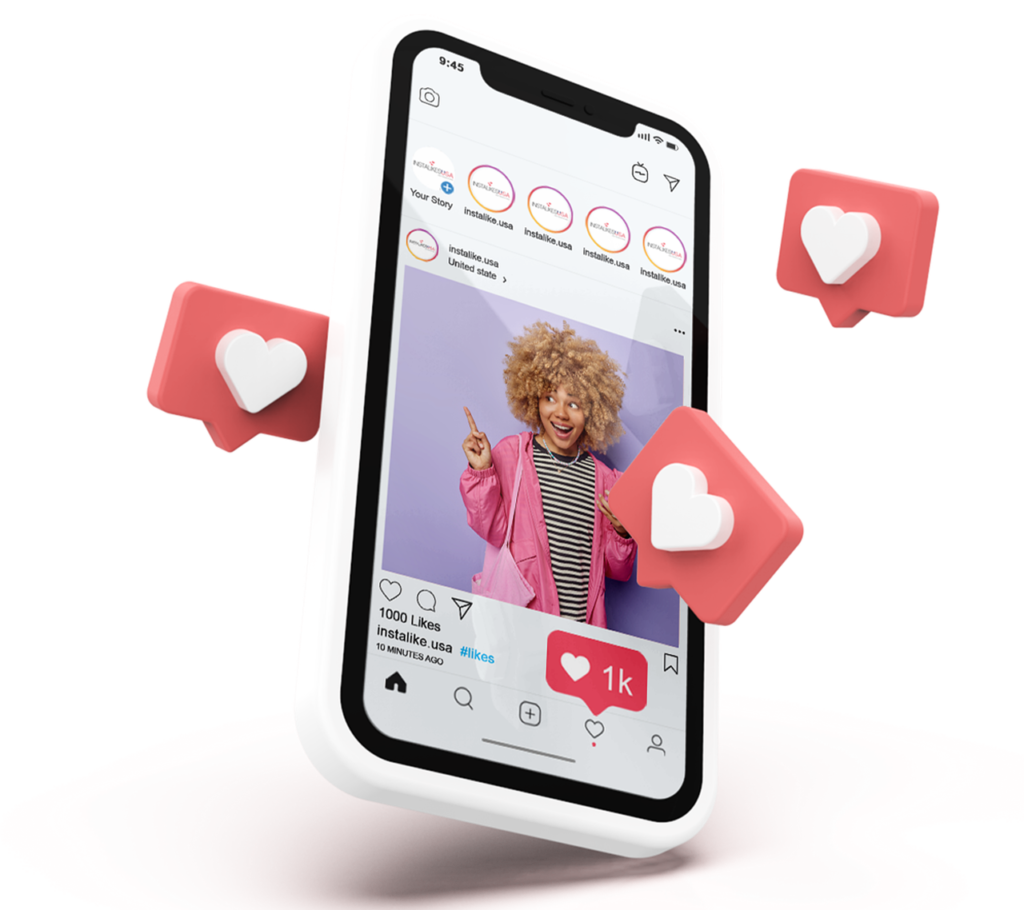This Article has been revised, edited and added to, by Poulomi Chakraborty.
- Understanding the Viral Phenomenon
- Frameworks of Viral Campaigns
- The Mechanism of Spreading
- Metrics Matter: Analyzing Viral Campaign Success
- Advanced Insights into Viral Engagement Metrics
- The Power of User-Generated Content (UGC)
- A/B Testing for Real-time Strategy Adjustments
- Micro-Moments and the User Journey
- Integrating Predictive Analytics
- The Role of Micro-Metrics in Campaign Adjustments
- Leveraging Sentiment Analysis for Brand Health
- Utilizing Real-Time Data for Agile Marketing
- Building a Data-Driven Culture
- Consumer Behavior: The Heartbeat of Viral Campaigns
- Conclusion
Digital marketing has propelled a new era of business where a single well-orchestrated campaign can skyrocket a brand’s visibility, credibility, and profitability. Dive into the science of how something goes viral and how to harness these insights into a digital marketing strategy.
Understanding the Viral Phenomenon

The viral phenomenon in digital marketing represents an opportunity for startups to achieve significant visibility and engagement with minimal investment. This section explores deeper into the dynamics of virality, focusing on new dimensions that startup founders can leverage to craft their own viral campaigns.
The Intricacies of Virality
Emotional Triggers and Content Sharing
Humans are emotional beings, and content that evokes strong emotional responses – whether it be joy, anger, surprise, or sadness – has a higher likelihood of being shared. An emotionally charged piece of content can ignite a sense of unity among people who relate to or are moved by the emotion conveyed, leading them to share it with their networks. This sharing can exponentially increase the content’s reach, potentially resulting in virality.
In the realm of digital marketing, understanding and effectively leveraging emotional triggers becomes pivotal. A study by the University of Pennsylvania outlined that content which evoked awe, anger, or anxiety was more likely to become viral. Consequently, crafting campaigns that tactically utilize these emotional stimuli, while aligning with the brand’s values and message, may amplify its viral potential.
Social Currency and Sharing Behavior
People naturally want to share content that enhances their social status or makes them appear knowledgeable, entertaining, or valuable to their network. This concept, known as social currency, is a key principle in the viral science. In essence, if your digital marketing campaign makes users feel that sharing the content will elevate their social standing, it enhances the possibility of it going viral.
Consider utilizing quizzes, facts, or creating content that’s in sync with trending topics. Align your campaign with the aspects that people are eager to associate themselves with. An exemplary instance is the “Share a Coke” campaign by Coca-Cola, which personalized bottles with names, encouraging people to find and share a Coke with their names or the names of loved ones, providing them with social currency by making their shared content personalized and relatable.
The Psychology Behind Sharing
The Desire for Connectivity
Sharing is a fundamental aspect of human behavior. From a psychological perspective, people share for various reasons, such as to foster connectivity, nurture relationships, or to define themselves to others. Dr. Jonah Berger, a marketing professor at the Wharton School, suggests that understanding the motive behind why people share can empower marketers to create content that resonates and is share-worthy.
Marketers can leverage the psychological drivers behind sharing by creating campaigns that appeal to the audience’s desire to connect and belong. Engaging campaigns that invite user participation or create community-centric narratives can drive sharing by satisfying the inherent human need to connect and belong.
Validation and Self-Expression
A digital marketing campaign that allows users to express themselves or validates their beliefs and values can also enhance shareability. For instance, campaigns that spotlight social issues or embrace cultural moments can gain traction by aligning with the audience’s values and providing a platform for self-expression.
Consider Nike’s “Believe in something” campaign, which showcased Colin Kaepernick, an NFL player who knelt during the national anthem to protest racial injustice. The campaign resonated with many and became a medium through which individuals could express their stand on the issue.
The Role of Network Effects in Virality
One crucial aspect that drives the viral phenomenon is the network effect. The basic premise is that the value of your content increases as more people share and interact with it. For startups, understanding and utilizing the network effects within social platforms can turn a simple message into a widespread trend.
To capitalize on network effects, consider creating content that not only appeals to your direct audience but also to a broader secondary audience who may be reached as your initial audience shares the content. The goal is to design content that provides incremental value as more people engage with it, such as interactive content that gains more features or insights as more users participate. This could include collaborative challenges, shared stories, or user-driven contests that inherently encourage sharing and participation.
Strategic Content Placement
Where you initially launch your viral campaign can be just as important as the content itself. Choosing the right platform for the kickoff can enhance the content’s reach and appeal. For startups, this means identifying where your target audience is most active and what type of content resonates best on that platform.
Start by analyzing the demographic profiles of different social platforms and align your campaign launch with the platform whose user base matches your target audience’s profile. For instance, if your target audience is professionals, LinkedIn might be a better starting point than TikTok. However, if your content is more visual and appeals to a younger audience, Instagram or TikTok could prove more fruitful.
Timing and Cultural Relevance
The timing of your content release plays a pivotal role in its potential virality. Release your content when it is most likely to capture attention, such as during significant cultural events, holidays, or within trending conversations. This does not only mean being aware of global or national events but also tuning into more niche happenings that your target audience might be following.
For startups, this means keeping a pulse on current events and cultural trends through tools like Google Trends or social listening platforms that can inform you about rising topics or sentiments. Aligning your content with these trends can provide a contextual hook that significantly enhances sharing and engagement.
Emotional Resonance and Authenticity
While understanding emotional triggers is crucial, the authenticity with which these emotions are presented can make or break a campaign’s viral potential. For startups, this means crafting messages that genuinely reflect your brand’s values and mission. Authentic content resonates deeper, creating a more substantial impact and encouraging shares not just for the content’s novelty, but for its sincerity and relatability.
Develop content that tells your brand’s story or shares your mission in a way that touches on universal emotions. This can involve customer stories, behind-the-scenes content, or your team’s personal journeys. Authentic stories can humanize your brand and create emotional connections that are more likely to be shared.
Leveraging Technology for Viral Content Creation
Emerging technologies can also play a significant role in creating and disseminating viral content. For example, artificial intelligence tools can help analyze vast amounts of data to determine what types of content are most likely to go viral among your target audience. Additionally, augmented reality (AR) or virtual reality (VR) can be used to create unique, immersive experiences that are share-worthy and buzz-generating.
For startups, investing in these technologies might seem daunting, but many cloud-based services offer scalable and affordable options. These technologies not only help in creating standout content but also in analyzing user engagement and optimizing future campaigns based on real-time feedback.
In understanding the viral phenomenon, startups should see beyond just crafting a hit piece of content. It’s about creating a strategy that considers the network effects, strategic content placement, perfect timing, emotional resonance, and the latest technologies to consistently produce content that has the potential to go viral, thus amplifying your brand’s message across a vast audience.
Frameworks of Viral Campaigns

To craft a viral campaign, understanding the frameworks that govern the creation and dissemination of viral content is essential. For startups, these frameworks not only guide the development of the campaign but also ensure that every element is optimized for maximum shareability and impact.
Crafting Content with Viral Elements
Creating content with the potential to go viral involves understanding and integrating viral elements and triggers that can capture the attention and emotional resonance of a vast audience. Such content is often characterized by certain features like relatability, novelty, and eliciting emotional responses.
The Mechanism of Spreading
Understanding the mechanisms through which content spreads online is paramount. This involves knowledge of various platforms, understanding the algorithm that dictates content dissemination, and recognizing patterns in how users interact with and share content across different digital realms.
Utilizing Platform-Specific Strategies
Each social media platform has its own set of user behaviors, algorithms, and content formats. Thus, understanding how to optimize content for each platform is vital. For example, visual content may be king on Instagram, while insightful and topical content may gain traction on LinkedIn. Tailoring your campaign to each platform’s unique dynamics enhances the possibility of it gaining momentum and potentially going viral.
Influencer Collaborations
Leveraging influencers, who have amassed a following and credibility within a particular niche, can amplify the reach of your digital marketing campaign. Collaborating with influencers not only taps into their follower base but also inherits the trust and rapport they have established with their audience.
Building a Narrative Framework
A strong narrative is at the heart of every viral campaign. It’s not just about selling a product or service; it’s about telling a story that viewers can connect with on an emotional level. For startups, constructing a narrative that encapsulates your brand’s essence and values can resonate deeply with your audience, prompting them to share your story with others.
Creating Relatable Characters: Introduce characters in your narrative that mirror your audience’s aspirations or challenges. This could be a fictional character or a real person, like a customer or team member, whose story will carry the central message of your campaign.
Developing a Plot that Inspires: Every good story needs a compelling plot—this could be the journey of overcoming a problem, an underdog story, or an unexpected discovery. Your plot should build toward a meaningful climax that leaves your audience feeling inspired, surprised, or enlightened.
Incorporating Universal Themes: Themes like triumph, love, innovation, or community resonate universally. Tying your brand’s story to broader themes can help elevate the personal connection and make your message more universally appealing.
Psychological Triggers in Viral Content
To truly tap into the potential of viral marketing, understanding the psychological triggers that encourage people to share content is crucial. These triggers can be thoughtfully integrated into your campaign to enhance its virality.
FOMO – Fear of Missing Out: Create content that makes viewers feel they’ll be missing out if they don’t engage or share. This could be a limited-time offer, exclusive content, or a trending topic that everyone is talking about.
Humor and Surprise: Content that surprises the audience or makes them laugh is more likely to be shared. Consider how your campaign can include unexpected twists or humorous elements that catch the audience off-guard in a delightful way.
Social Proof: People are more likely to engage with and share content that others are interacting with. Showcasing the popularity of your content, through views, shares, or testimonials, can encourage others to share it too.
Leverage Multi-Channel Integration
For startups, it’s vital to ensure that your viral campaign is not confined to a single platform but is integrated across multiple digital channels. This multi-channel approach helps to amplify your reach and captures your audience across different touchpoints.
Coordinated Launch: Plan your campaign launch across all channels simultaneously. This coordinated effort can create a buzz that feeds into each platform, enhancing the overall impact of the campaign.
Tailored Content for Each Platform: While your campaign’s core message remains consistent, tailor the presentation and format of your content to fit the unique style and audience of each platform. For instance, Instagram can host visually engaging posts, while LinkedIn can carry more professional and insightful content.
Interactive and Shareable Elements: Include elements that encourage interaction and sharing, such as hashtags, contests, or interactive polls across platforms. These elements not only engage but also facilitate easy sharing of your content.
Continuous Optimization and Learning
Viral campaigns are not set-and-forget. They require continuous monitoring, optimization, and adaptation based on real-time data and feedback.
Monitor Performance in Real-Time: Use analytics tools to track how your campaign is performing across different platforms. Look at engagement rates, click-through rates, and sharing metrics to gauge success.
Adapt Based on Feedback: Be prepared to make quick adjustments to your campaign based on user feedback and performance metrics. This agility can help you capitalize on what’s working and mitigate elements that are not.
Learn and Evolve: Post-campaign, conduct a thorough analysis to understand what factors contributed to the success or shortcomings of the campaign. Apply these learnings to refine future strategies, making your next campaigns even more impactful.
By building robust narrative frameworks, triggering psychological engagement, leveraging multi-channel integration, and continuously optimizing based on real-time data, startups can enhance their chances of launching successful viral campaigns that not only capture immediate attention but also foster long-term brand loyalty and recognition.
The Mechanism of Spreading

The mechanism of spreading, essentially how content circulates across digital platforms, is fundamental for achieving virality. For startup founders, understanding and strategically influencing this mechanism can greatly enhance the reach and impact of marketing campaigns.
The Algorithmic Pulse of Social Platforms
Decoding Algorithmic Behavior
Almost all major social platforms use algorithms to curate what content is shown to their users. An algorithm is essentially a set of rules or instructions that platforms follow to determine which content should be shown to whom and when. It’s pivotal for digital marketers to understand these algorithms to amplify their campaign’s reach.
For instance, Facebook’s algorithm takes into account user engagement, relevance, content type, and many other factors to determine content placement in a user’s feed. This means that content that garners more likes, shares, and comments in a short span of time is more likely to be seen by a wider audience.
Timing is Key
One of the more subtle, yet crucial, aspects of a campaign’s virality is timing. Posting when your target audience is most active can lead to a surge in initial engagement, which can snowball into increased visibility and more shares. Each platform has its own peak hours, influenced by factors such as the platform’s primary user demographics, geographic distribution, and user behavior.
Tools like Google Analytics and platform-specific insights, such as Twitter Analytics or Instagram Insights, can help marketers pinpoint these optimal posting times.
The Power and Perils of Influencer Collaborations
Amplifying Reach Through Influencers
Influencers, with their dedicated and engaged followers, can significantly amplify the reach of a campaign. However, it’s not merely about numbers. An influencer whose audience aligns with your brand or campaign’s message can create a more profound impact than one with a larger but less relevant follower base.
For instance, a niche tech influencer with 20,000 engaged followers might bring more value to a tech product launch than a general lifestyle influencer with 200,000 followers. It’s the synergy between the influencer’s audience, content theme, and your campaign that creates magic.
Authenticity in Collaboration
One pitfall many brands fall into when collaborating with influencers is sacrificing authenticity for visibility. Influencer marketing works best when the collaboration feels natural and genuine to the audience. This is why it’s crucial to ensure that the influencer’s values, style, and messaging align with your brand.
A forced or overly commercial collaboration can lead to distrust and can be counter-productive. The audience values authenticity, and any perceived deception can lead to negative virality.
Monitoring and Adapting
Post-collaboration, it’s vital to monitor the campaign’s impact. Look at metrics such as engagement rates, increased followers, website traffic, and direct conversions or sales if applicable. These metrics will provide insights into what worked and what didn’t, allowing for informed decisions in future campaigns.
Understanding Content Diffusion
Content diffusion refers to how content is shared from one user to another and spreads across networks. This process is influenced by several factors, each of which must be tactically managed to optimize for virality.
Seeding Strategy: Begin by identifying key influencers, early adopters, and brand advocates who can act as initial seeds for your content. These individuals have the social authority and network size to give your content the initial momentum it needs. Engage with them directly, perhaps providing early access, exclusive content, or other incentives to share your content.
Network Dynamics: Each social network has unique characteristics and user behavior. For example, Twitter is rapid and conversational, making it ideal for quick, timely messages, while Instagram is driven by aesthetics and stories, suitable for visual content with a narrative. Tailor your content’s format and message to fit the dynamics of the platforms where you expect it to spread.
Optimizing for Shareability
Maximizing the shareability of your content involves more than just creating compelling content; it requires technical and psychological considerations that encourage sharing.
Ease of Sharing: Simplify the process of sharing your content. Ensure social sharing buttons are prominent and functional on mobile and desktop platforms. Consider integrating direct sharing features that allow users to share content with minimal clicks or taps.
Emotional Resonance: Content that strongly resonates on an emotional level is more likely to be shared. This involves tapping into emotions like awe, joy, or even righteous indignation, which can motivate users to spread the word.
Leveraging the Compounding Effect of Social Shares
As content is shared, its reach compounds exponentially. Each share increases the potential audience dramatically, particularly when shared by users with large followings.
Viral Coefficients: Understand and calculate the viral coefficient of your content—how many new users, on average, each user can bring in through their shares. A viral coefficient greater than one means that your campaign can grow exponentially.
Multi-Touch Attribution: In the digital marketing ecosystem, it’s crucial to understand the multiple touchpoints a user interacts with before sharing content. Use multi-touch attribution models to track and analyze which platforms and what type of content are most effective in contributing to shares and conversions.
Monitoring and Adapting to Feedback Loops
The feedback loop from your audience is a crucial component of the spreading mechanism. Monitoring real-time reactions and adapting your strategy accordingly can significantly amplify your campaign’s effectiveness.
Real-Time Analytics: Utilize tools that provide real-time analytics to monitor how your content performs as soon as it goes live. Watch for spikes in engagement, which can indicate potential virality, and be prepared to capitalize on this by further promoting the content or engaging directly with users.
Adaptive Content Strategy: Be ready to adapt your content strategy based on audience reception. If certain aspects of your campaign trigger more engagement or sharing, consider doubling down on those elements in real-time, adjusting your campaign to emphasize what works best.
Iterative Learning: Each campaign offers valuable lessons that can refine your understanding of what makes content spread. Continuously learning from each campaign and applying these insights to subsequent initiatives will improve your chances of achieving virality.
By mastering the mechanism of spreading through strategic seeding, optimizing for shareability, leveraging the exponential nature of social shares, and adapting to real-time feedback, startup founders can significantly enhance the viral potential of their digital marketing campaigns. This not only spreads the brand’s message wider and faster but also builds a foundation for sustained digital presence and influence.

Related: Check out our free SEO suite

Metrics Matter: Analyzing Viral Campaign Success
Analyzing the success of a viral campaign is crucial for startup founders to understand the effectiveness of their marketing efforts and to refine future strategies. Here, we delve deeper into the metrics that matter and how to interpret them to gauge the success of viral campaigns.
The Pulse of Engagement Metrics
Beyond the ‘Like’ Button
The digital age has brought forth numerous ways for users to interact with content. While ‘likes’ or ‘favorites’ are the most basic forms of interaction, comments, shares, saves, and even the duration of content views are potent indicators of genuine engagement.
For instance, while a video might amass thousands of views, it’s the average watch time that indicates how compelling it was to the audience. Similarly, while a post might garner numerous likes, the comments can provide insights into the depth of the audience’s connection with the content.
Shares: The Golden Metric for Virality
The ultimate goal of a viral campaign is to encourage users to share the content within their networks. Every share multiplies potential viewership exponentially, making it the most coveted form of engagement for marketers aiming for virality. A high share-to-like ratio often signifies content that resonates deeply, prompting users not just to appreciate it but to actively spread it.
Diving Deep with Analytics
Platform-Provided Insights
Most social media platforms offer in-depth analytics to page administrators or business accounts. These analytics dive deeper than surface-level metrics, providing data like:
- Demographics of the engaged audience (age, gender, location)
- Peak engagement times
- Types of content that are most favored
- User journey and click-through rates
For instance, Instagram Insights not only shows the number of views a video received but also reveals metrics like how many users visited the profile after watching the video or how many followed the account post-engagement.
Third-Party Analytic Tools
While platform-provided insights are valuable, third-party tools can offer even more granular data and cross-platform analyses. Tools like Hootsuite, Buffer, and SocialBakers provide comprehensive data visualizations, aiding in deciphering patterns and trends over time.
Using these tools, brands can A/B test different content styles, posting times, or even captions to discern what maximizes engagement and drives virality.
Adapting with Feedback Loops
The Iterative Nature of Viral Marketing
One campaign’s data sets the foundation for the next. By creating feedback loops where past campaign metrics inform the strategies of future campaigns, brands can continually refine their approach.
For instance, if a brand finds that user-generated content campaigns consistently outperform other content types, it can channel more resources into encouraging and curating such content. Conversely, if a particular content format, like long-form video, underperforms across campaigns, it might be worth re-evaluating its place in the marketing strategy.
Real-Time Adaptability
While post-campaign analysis is crucial, monitoring real-time engagement metrics can allow brands to pivot or amplify strategies while a campaign is still live. If a particular piece of content begins to gain traction, brands can increase its visibility through promoted posts or adapt subsequent content pieces to resonate with the same theme.
Deep Diving into Engagement Metrics
While basic metrics such as likes, shares, and comments provide a surface-level understanding of engagement, deeper analytics can offer more insightful data that inform strategic decisions.
Engagement Rate: This metric considers the ratio of active interactions (likes, comments, shares) to the number of total followers or viewers. High engagement rates often indicate content that genuinely interests and resonates with your audience, which can be a predictor of viral potential.
Watch Time: For video content, watch time is a critical metric. It not only shows how much of your content was viewed but also how engaging it was. Longer watch times are generally indicative of content that captures and holds attention, a vital aspect of viral content.
Click-Through Rate (CTR): In campaigns where you direct users to a landing page or another target, the CTR measures how effectively the content encourages action beyond viewing or liking. A high CTR combined with other engagement metrics can signify a highly effective campaign.
User Behavior Analysis
Understanding user behavior beyond initial engagement metrics provides deeper insights into the effectiveness of your content and can help tailor strategies to better meet audience preferences.
Bounce Rate and Page Sessions: Analyze how users interact with your website following engagement with your content. High bounce rates may indicate that while your content was compelling enough to get a click, it may not have delivered on its promise. Conversely, longer page sessions and multiple page views suggest content that successfully draws users deeper into your brand experience.
Conversion Rate: Ultimately, the goal of many viral campaigns is to drive actions, whether sign-ups, purchases, or another conversion metric. Measuring how many users take this step post-engagement can help quantify the ROI of your campaign.
Heatmaps and User Flow: Tools like heatmaps and user flow analytics can show how users navigate from your content to other areas of your website. This can be particularly useful for understanding which parts of your website are most engaging or if there are drop-off points that need addressing.
Sentiment Analysis
Measuring the sentiment of the interactions can provide qualitative insights into how your audience perceives your brand and content.
Comment Sentiment: Use natural language processing tools to analyze the sentiment of comments and mentions. Positive sentiments can reinforce the strength of your content, while negative sentiments might indicate areas for improvement or potential PR issues.
Share Sentiment: Analyzing the context in which your content is shared can provide insights into what elements of your campaign resonate most with the audience. Are they sharing because it’s humorous, informative, or inspiring? Understanding this can help guide the tone and focus of future content.
Long-Term Impact Measurement
While immediate metrics are important, assessing the long-term impact of a viral campaign on brand perception and audience growth is crucial for sustained success.
Brand Awareness and Perception: Post-campaign surveys and brand awareness studies can help assess how a viral campaign has shifted public perception of your brand.
Audience Growth: Track metrics like new followers or subscribers gained during and after the campaign to gauge its effectiveness in building your audience.
Repeat Engagement: Monitor if users who engaged with a particular viral campaign return to engage with subsequent content. Repeat engagement is a strong indicator of lasting interest and the potential for long-term brand loyalty.
By integrating these comprehensive analytical approaches, startup founders can not only measure the success of a viral campaign but also gain valuable insights that drive smarter, more effective marketing strategies in the future. These insights enable startups to not just chase viral moments but to strategically build a loyal audience and a respected brand.
Advanced Insights into Viral Engagement Metrics

To truly harness the power of a viral campaign, startup founders must dive deep into advanced insights provided by engagement metrics. These metrics not only measure success but also offer strategic pathways to refine and optimize future campaigns for better alignment with target audiences.
The Power of User-Generated Content (UGC)
UGC as a Trust Signal
User-generated content, often colloquially referred to as UGC, is any form of content — be it photos, videos, reviews, or testimonials — created by consumers rather than brands. When potential customers see actual users enjoying or endorsing a product or service, it builds trust more effectively than traditional advertisements.
According to various studies, UGC is considered more authentic and influential in purchase decisions. It acts as social proof, an essential psychological phenomenon where people assume the actions of others to reflect the correct behavior in a specific context.
UGC in Boosting Engagement
UGC is not just passive content; it’s an active engagement tool. When brands encourage their audience to create content, it does two things: it fosters a sense of community and ownership, and it amplifies reach. Each piece of UGC acts as a mini-campaign of its own, often reaching an audience segment that the brand might not have directly accessed.
Brands like GoPro have built their entire social media strategy around UGC, showcasing user footage and stories, which not only highlights the product’s capabilities but also builds a community of enthusiasts.
A/B Testing for Real-time Strategy Adjustments
The Essence of A/B Testing
A/B testing, also known as split testing, is a method of comparing two versions of a campaign against each other to determine which one performs better. This is achieved by showing the two variants (A and B) to two similar audience groups and comparing the engagement and conversion metrics.
Real-time Insights
Digital marketing allows for real-time A/B testing, especially in platforms that support dynamic content. This means brands can continually refine their campaign, even while it’s live. For instance, if a brand is unsure which headline resonates more, they can run simultaneous ads with both versions. As engagement data rolls in, resources can be shifted to the better-performing variant.
Micro-Moments and the User Journey
Deciphering Micro-Moments
The term ‘micro-moments’ was coined by Google to describe the instant, intent-driven decision moments that dictate preferences and choices. These are the moments when consumers turn to digital devices, especially smartphones, to act on a need to learn, do, discover, watch, or buy.
By understanding and optimizing for these micro-moments, brands can ensure they’re present and relevant during crucial decision-making junctures.
Mapping Micro-Moments to Engagement Metrics
A surge in website traffic after a how-to video, an increase in product inquiries after an influencer’s endorsement, or a spike in app downloads after a demo video are all metrics indicating a successful capture of micro-moments.
Integrating Predictive Analytics
Predictive analytics can revolutionize how startups anticipate the success of their viral campaigns. By analyzing historical data and current market trends, predictive models can forecast potential engagement levels and virality of content.
Modeling Viral Potential: Use machine learning algorithms to analyze past campaigns and identify patterns or features that led to high engagement levels. This can include time of posting, content format, emotional tone, and initial engagement rates.
Anticipating Audience Behavior: Predictive analytics can also help forecast how different segments of your audience might react to certain types of content. This allows for more targeted content creation that is likely to resonate strongly with specific groups, increasing the likelihood of virality within niche communities.
The Role of Micro-Metrics in Campaign Adjustments
While traditional metrics like views, likes, and shares provide a broad overview of campaign performance, micro-metrics offer nuanced insights that can be crucial for mid-campaign adjustments.
Scroll Depth and Interaction Rates: Tools that measure how deeply users engage with content (such as scroll depth on articles or interaction rates on interactive content) can indicate how captivating your material is. This is particularly useful for long-form content or interactive media where engagement depth is critical.
Exit Points and Drop-off Rates: Identifying where users stop engaging with your content can provide actionable insights into its pacing or relevance. Adjusting content based on these insights can help maintain user interest throughout the campaign lifecycle.
Leveraging Sentiment Analysis for Brand Health
Advanced sentiment analysis tools go beyond basic positive or negative classifications. They can provide insights into the emotional nuances of how your content is received, which can be pivotal for maintaining brand health.
Emotional Temperature: Assessing the emotional temperature of the reactions to your campaign can guide the tone of ongoing and future marketing efforts. For example, if a campaign intended to be humorous is instead receiving angry reactions, it might be prudent to adjust the messaging.
Brand Sentiment Over Time: Tracking changes in brand sentiment before, during, and after a campaign can highlight its impact on your brand’s perception. This long-term view can inform strategic decisions about brand positioning and message alignment.
Utilizing Real-Time Data for Agile Marketing
The ability to use real-time data effectively can provide startups with the agility needed to capitalize on viral trends as they happen.
Real-Time Performance Dashboards: Implement dashboards that provide real-time analytics on campaign performance. Quick access to current data allows for swift decisions, like increasing ad spend on high-performing content or repositioning strategies that aren’t meeting expectations.
A/B Testing in Live Environments: Conduct A/B tests on different aspects of your content in real-time to see what maximizes engagement. This could involve testing different headlines, images, or even call-to-action placements to refine what works best in attracting and retaining audience interest.
Building a Data-Driven Culture
Finally, embedding a data-driven culture within your startup can ensure that insights from viral campaign metrics are fully integrated into all marketing decisions.
Training Teams on Analytics Tools: Equip your team with the knowledge and tools to understand and interpret data effectively. This empowers everyone involved in content creation and campaign management to make informed decisions based on solid data.
Regular Review Sessions: Hold regular meetings to review what the data is telling you about your marketing strategies. These sessions can help pivot strategies quickly and foster an environment where continuous improvement is part of the team ethos.
By delving into advanced insights from viral engagement metrics, startups can not only gauge the success of their campaigns but also enhance their strategic approach to content creation and distribution. This informed approach ensures that every piece of content has the potential to resonate deeply, spread widely, and ultimately drive meaningful engagement that supports long-term business goals.
Consumer Behavior: The Heartbeat of Viral Campaigns

Understanding and leveraging consumer behavior is essential for designing viral campaigns that resonate with audiences on a deeper level. For startup founders, tapping into the nuances of how consumers interact with digital content can significantly enhance the effectiveness of marketing efforts.
Understanding Behavioral Triggers
The Role of Curiosity
Curiosity is a powerful emotion, and it can be a driving force behind the success of a viral campaign. When consumers are presented with content that teases or challenges their existing knowledge or beliefs, they are more likely to engage with and share that content. This principle is the reason behind the success of clickbait headlines, mystery campaigns, and teaser videos. However, it’s crucial that the payoff (actual content) matches the promise, or brands risk damaging their credibility.
The Bandwagon Effect
Humans are inherently social creatures, and they often rely on the behaviors and opinions of others to determine their own. The bandwagon effect is a psychological phenomenon where people tend to do something primarily because others are doing it, regardless of their own beliefs. In viral marketing, leveraging social proof, like showcasing the number of shares, testimonials, or user-generated content, can spur others to engage with and share the campaign.
Emotions: The Catalyst for Sharing
Joy and Humor
Content that evokes happiness, laughter, or joy is among the most shared on the internet. Such content offers a break from daily routines and provides a moment of light-heartedness. Brands that successfully create joyful content, be it through memes, funny videos, or heartwarming stories, often see higher virality.
Evoking Empathy
Empathy-driven content strikes a deep chord. Whether it’s showcasing real-life challenges, highlighting societal issues, or telling personal stories, content that makes users “feel” is powerfully shareable. However, it’s essential to approach such topics with authenticity and sensitivity.
Surprise and Awe
Capturing moments of surprise or awe-inspiring visuals can leave a lasting impression on viewers. Whether it’s unveiling a revolutionary product, capturing nature’s wonders, or revealing unexpected plot twists in storytelling, the element of surprise can boost content sharing.
Storytelling: Building a Connection
Narratives that Resonate
Stories have been a primary method of communication for millennia. In marketing, a well-constructed narrative can elevate a campaign from mere information dissemination to creating an emotional bond with the audience. It’s not just about what’s being promoted, but how it’s being presented.
Relatability in Narratives
For storytelling to be effective, the narrative must be relatable to the target audience. It should reflect their challenges, aspirations, dreams, or fears. When users see a part of themselves in a story, they are more inclined to engage with it and share it within their circles.
Psychological Engagement and Connection
The psychological underpinnings of consumer behavior can offer profound insights into how and why content goes viral. Creating a deeper emotional connection with your audience can transform passive viewers into active participants and sharers of your content.
Narrative Psychology: People are naturally drawn to stories. Utilizing narrative psychology, you can craft your marketing messages in a story format that leads the audience through a sequence of emotions, climaxing at a satisfying end. This type of storytelling not only keeps the audience engaged but also makes them more likely to share the story with others, as they feel a part of it.
Cognitive Biases: Leveraging common cognitive biases can be a powerful tactic in viral marketing. For example, the bandwagon effect (where people do something primarily because others are doing it) can be triggered by showing large numbers of likes and shares, subtly encouraging new viewers to engage and share as well.
Social Identity and Group Influence
Consumers often define themselves through their social groups, and these identities can influence their sharing behaviors. Understanding the social identities within your target audience can help tailor content that resonates on a communal level.
Community Building: Create content that reinforces the positive aspects of the communities you are targeting. This can be through highlighting community achievements, addressing common challenges, or celebrating stories of individual members who have made a significant impact.
In-group Language and Symbols: Use language, symbols, or cultural references that are unique and significant to specific groups. This not only makes your content more relatable but also enhances its shareability within these groups as it resonates with their identity.
The Role of Value Exchange in Viral Marketing
At the core of every interaction or transaction in viral marketing is the concept of value exchange. Consumers will share and engage with your content if they perceive that they receive value from it, which can be informational, emotional, or social.
Informational Value: Provide content that educates or informs, offering unique insights or valuable data that is not easily found elsewhere. This kind of content is often shared because users feel they are helping others by spreading useful information.
Emotional Value: Content that significantly affects the viewer’s emotions, whether through inspiration, humor, or warmth, tends to be shared more because it offers a strong emotional experience that users want their friends and family to also feel.
Social Value: Create content that users will want to share to enhance their social standing. This could be content that is currently trending, content that positions the sharer as an insider or thought leader, or content that aligns with the sharer’s personal brand.
Behavioral Analytics for Strategic Insights
Utilizing behavioral analytics can provide startups with crucial insights into how consumers are interacting with their content on a granular level. This data can be pivotal in refining the targeting and effectiveness of viral campaigns.
User Path Tracking: Analyze the paths users take after engaging with your content. This can provide insights into what actions they are compelled to take, whether it’s subscribing to a newsletter, sharing the content, or making a purchase.
Engagement Heatmaps: Use heatmaps to understand which parts of your content capture the most attention and engagement. This can help in optimizing the layout and design of your content to maximize viewer interaction and sharing.
A/B Testing Behavioral Responses: Continuously test different versions of your content to see which elements drive the most engagement and sharing. This can include variations in headlines, images, call-to-actions, and even content length.
By deeply understanding and strategically applying insights from consumer behavior, startup founders can not only increase the likelihood of their campaigns going viral but also build a more engaged and loyal audience. This approach ensures that every piece of content not only aims for immediate viral success but also aligns with long-term brand building and customer relationship goals.
Conclusion
The allure of virality has brands continuously chasing the dream of that one campaign that resonates globally, transcends cultural barriers, and leaves an indelible mark on the digital realm. However, as we’ve explored, virality isn’t just about chance or pure luck. It’s a symphony, where each instrument plays a pivotal role, and when harmonized, creates a melody that’s unforgettable.
From understanding the mechanics of how content spreads across platforms to appreciating the nuances of consumer behavior and emotions, there’s a profound science behind what makes a campaign go viral. Brands must not only create compelling content but also appreciate the intricacies of platform algorithms, the power of timely engagement, and the leverage influencers can provide. It’s about weaving a narrative, one that’s genuine, resonant, and taps into the very core of human emotions and experiences.
In the vast, ever-evolving landscape of digital marketing, it’s crucial for brands to remain adaptable, observant, and always in tune with their audience’s pulse. By continually refining strategies based on feedback, embracing innovative tools and approaches, and staying true to authentic storytelling, the dream of virality becomes less elusive.
Read Next
- Local SEO Tactics for Green Brick-and-Mortar Businesses
- User-Generated Content: Harnessing Reviews and Testimonials for Alternative Energy Startups
- Blog Post Ideas to Promote Sustainability and Amplify Your Sustainability Startup
- How to Promote Sustainable Stories through SEO for Sustainability-Focused Startups
- Crafting SEO-Friendly Content for Green Business Brands






















Comments are closed.